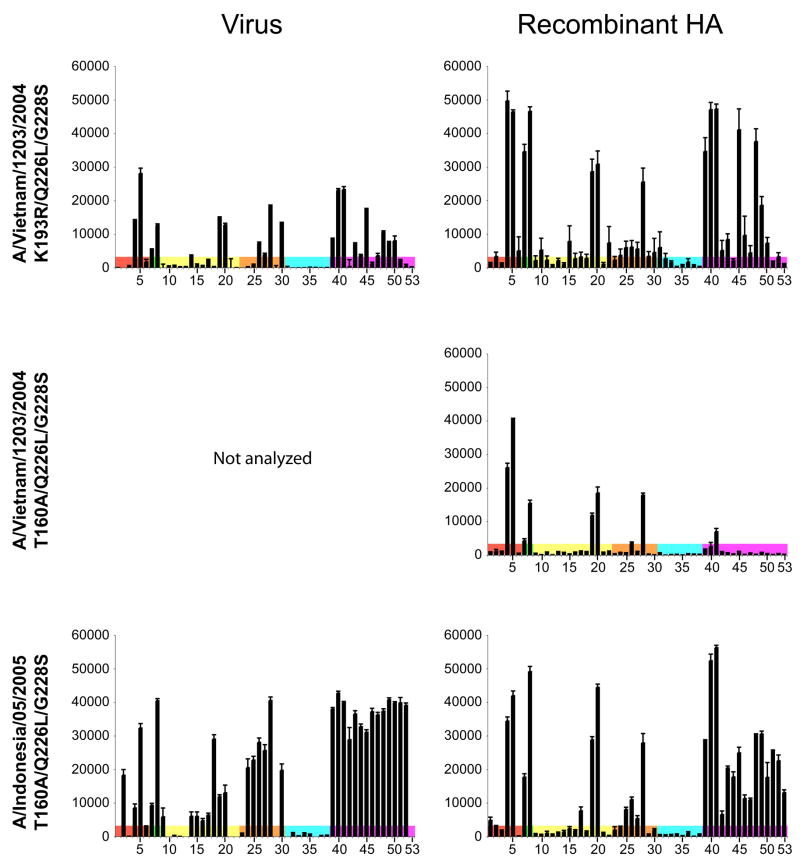Fig. 6.
Analysis of clade-specific mutations that increase propensity for binding to human-type receptors. Mutants were generated to assess the effect of Arg193 on the clade 1 strain, A/Vietnam/1203/2004 (Viet04-RLS, Row 1) and glycosylation at position 158 in HA on clade 1 (Viet04-ALS, Row 2) and clade 2.1 strain, A/Indonesia/05/2005 (Indo05-ALS, row 3), in addition to human H3 and H2 serotype mutations (Gln226Leu/Gly228Ser). The equivalent viruses shown were generated by reverse genetics and revealed a similar binding profile compared to the recombinant HA. Viruses were analyzed at an HA titer of 128. Because additional glycans were added to the microarrays during the course of this study, glycans #1, 21, 22, 29, 31, 36 and 53 are absent from some of the graphs.

